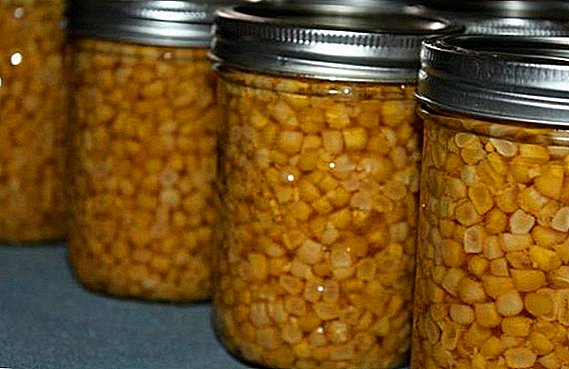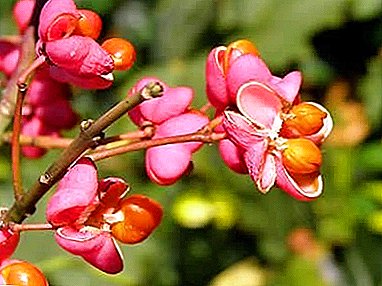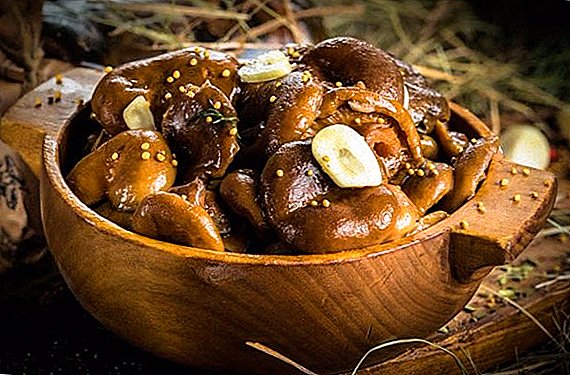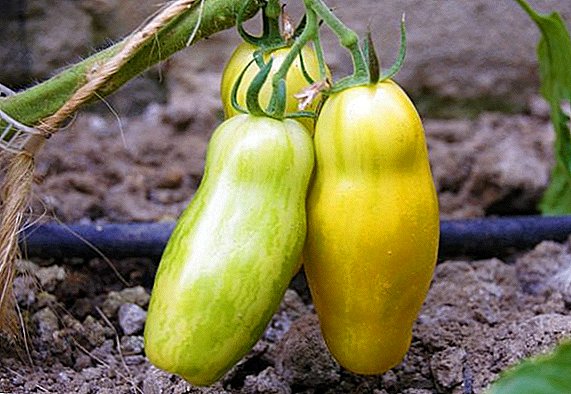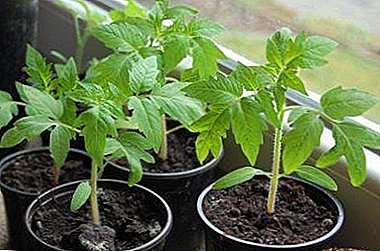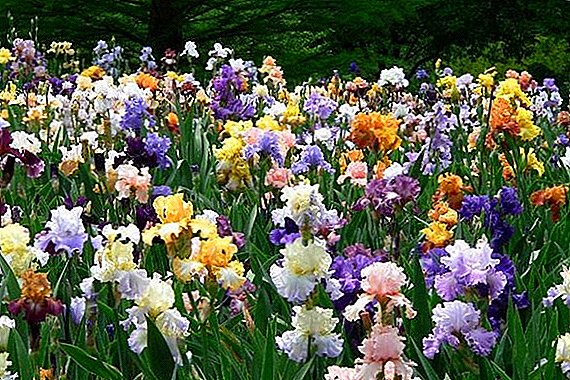 Many gardeners grow eggplants on their plots - a rather whimsical culture and requiring attentive care and care. In this regard, they have to deal with various diseases of eggplants. As you know, the best treatment of the disease - its prevention. But if it so happened that it was not possible to prevent the disease, one should know what the consequences could be and how to deal with them. It is about the diseases of eggplants and their treatment that will be discussed in this article with vivid photos.
Many gardeners grow eggplants on their plots - a rather whimsical culture and requiring attentive care and care. In this regard, they have to deal with various diseases of eggplants. As you know, the best treatment of the disease - its prevention. But if it so happened that it was not possible to prevent the disease, one should know what the consequences could be and how to deal with them. It is about the diseases of eggplants and their treatment that will be discussed in this article with vivid photos.
Black leg treatment
The reason for constriction of the root neck of eggplant and, as a result, darkening of it is a fungus. A gray bloom is formed in these areas. If the disease continues to develop, the culture will gradually fade, and if the fungus moves to the root system, the plant will dry out altogether.

The black leg gives the first signs after the beginning of shoots. Ideal conditions for the development of the disease - a high level of humidity.
To prevent the occurrence of this disease, you need to carry out preventive manipulations. It is recommended to disinfect the planting material with a solution of potassium permanganate, in any case not to allow overmoistening of the soil, especially at low air temperature.
You can also disinfect the soil with a bleach solution before planting, but this option is acceptable in the case when eggplants are grown in a greenhouse.

If the plant is still sick, it can be treated with Trichodermin. In cases where the result is not observed, it is necessary to remove the diseased sprout from the garden to prevent infection of neighboring bushes, the soil should be dried, loosened and sprinkled with wood ash.
Did you know? Eggplants are best friends losing weight. This vegetable contains only 28 kcal, so it is often used in various diet recipes. In addition, eggplants are rich in fiber, and therefore can improve metabolism and peristalsis.
Black bacterial spotting
Black spot on eggplants manifests itself in both open and closed soil. The causative agent of this disease is bacteria. Damage is possible throughout the growing season. Shows itself:
- on the leaves - small spots of black color with a yellow rim;
- oblong-shaped spots on the stems;
- on fruits, first, convex small points with watery edges, which eventually increase to 7-8 cm and form ulcers.
Important! Bacteria, which are the causative agents of black spot, remain in the seeds of eggplants and in plant residues.

The plant that was affected at the beginning of its development, most often dies. If he manages to survive, in the end all the same, one should not expect a good harvest and high-quality fruits.
The disease most actively develops at a temperature of 25-30 ° C, as well as at high humidity. Bacteria enter the fruit through mechanical damage, and into the leaves through the stomata.
How to deal with this disease? First you need to follow crop rotation. After harvesting, be sure to destroy all plant residues. If you don’t buy planting material, but grow it yourself, collect seeds only from healthy plants. Additionally, before sowing seeds need to be pickled.
Important! In cases where the disease manifests itself for two seasons in a row, it is necessary to completely change the soil in the greenhouse, or else to conduct a thorough disinfection of the soil.
Measures of prevention and treatment of late blight
Another disease of eggplants of fungal origin is blight. He shows himself to the fruits, stems and leaves of the plant.

On the leaves has the appearance of brown spots similar to rust, with a light green blurry edging. In wet weather on the inside of the leaves you can find a bloom of white.
High humidity provokes plant rotting, dry weather - drying. Morning fogs, prolonged cooling periods, temperature drops can increase the rate of the disease.
To cure a plant, it is possible to treat the bed with a solution of copper sulphate (0.2%), or another preparation that has copper in its composition. It is better to spray in the evening, because during the day the solution will evaporate quickly, not having time to act, and in the morning it may mix with dew, as a result of which its concentration will decrease.
 Since the disease can manifest itself at any stage of cultural development, don't handle plant chemicals, if it has already formed fruit. It is recommended to apply folk methods.
Since the disease can manifest itself at any stage of cultural development, don't handle plant chemicals, if it has already formed fruit. It is recommended to apply folk methods.
The most popular is garlic infusion. Prepare it from 1 cup of chopped garlic and 3 liters of water. You need to insist the mixture for 10 days, then dilute with water (1: 1) and spray the plants with a spray bottle. The method is very effective and, importantly, environmentally friendly.
Tomatoes, peppers, onions, strawberries, zucchini, cucumbers, savoy cabbage, and watermelons are also grown in the seedling way.
As an antiseptic can also act wood ash, which you need to sprinkle the affected parts of the plant.
White rot
White rot - a fungal disease. The second name is sclerotinia. First of all, the eggplant root system is affected, and then the disease spreads to the stems and fruits.
White plaque appears on the affected stems, and solid inclusions are formed inside, which gradually become softer, as a result of which they disturb the plant's nutritional processes from the root system. The plant begins to wither, dry. The affected eggplant fruits become watery and soft, they also have a whitish coating.

The disease usually manifests itself at the stage planting seedlings in the ground, especially well developed at low air temperatures. The pathogen can persist for a long time in the soil.
The basic rule that will help avoid the occurrence of white rot - do not allow the over-wetting of the soil under the eggplants. You need to regularly inspect plants for affected parts (leaves, stems or fruits). Culture should be watered with warm water, the affected areas can be sprinkled with wood ash.
Did you know? Eggplants contain vitamin PP - nicotinic acid. These vegetables are recommended for use by people who want to quit smoking, because it is easier for the body to cope with nicotine hunger thanks to this substance.
How to treat eggplants for mosaic
One of the most common diseases of eggplant is mosaic - a viral disease that can destroy about 15% of the entire crop in a season. If leaves or fruits are affected, then determining the presence of the disease is quite simple.

Light spots are visible on the leaves (sometimes, on the contrary, dark green), yellow spots are usually found on fruits. If only the root system of the plant was affected, then it will be somewhat more difficult to detect the mosaic, since there are no obvious signs in this case.
The disease usually develops from affected planting material, but it happens that the reason lies in diseased soil. A plant is affected during periods when it is susceptible to minor mechanical damage. These are the stages of transplanting, picking, etc.
To avoid the occurrence of the disease, you can treat the eggplant seedlings before planting 20% hydrochloric acid for 30 minutes, after which the planting material must be washed under running water.

Boxes for seedlings and all inventory is recommended to be disinfected, plants with any mosaic symptoms should be destroyed. For the prevention of the disease, gardeners use skimmed milk, which is diluted with water and applied once every 7-8 days.
Growing seedlings, you need to regularly inspect the plants, tracking and removing diseased seedlings.
Read also about the cultivation of other vegetables: potatoes, okra, squash, green beans, carrots, garlic, lagenarii.
Stolbur treatment
Phytoplasmic disease of stolbur most often affects eggplants planted on the bedand not in the greenhouse. Carriers of the stolbur are cicadas. The leaves of the diseased plant become purple-red, corrugated, the stems begin to thicken and then break easily, the flowers become deformed, dry and fall off.
Eggplant varieties that are resistant to this disease do not yet exist, so you need to be able to deal with this disease. It is necessary to regularly clean the bed of weeds, especially bindweed.
It is also recommended to process the planting with Actellic, a drug that limits the number of carriers of the disease. Another important advice for gardeners will be pre-sowing heat treatment of eggplant seeds.

As you can see, growing eggplants will have to face various diseases of these plants, but with proper and reliable information about combating them, you can greatly facilitate the care of the crop and even speed up its development. Eggplants require careful care, but in return they will certainly thank the gardener with a good and high-quality harvest.


